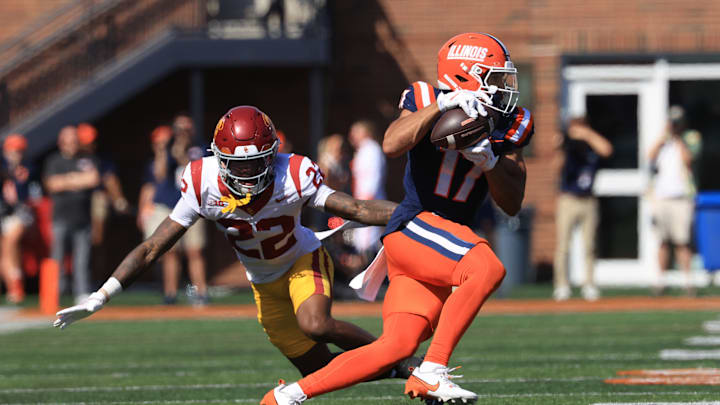While some were lamenting how porous the USC run defense was against Illinois in the 34-32 loss, it was the play of the secondary that needs to be focused on.
Granted, it is incredibly difficult to be without arguably the best safety in college football in Kamari Ramsey. This was always going to make life difficult, and more importantly, it would put others in a position that they would otherwise not have been in, meaning that the rotation and position are far from a deal compared to when everyone is fully healthy.
That can be said nearly every week, though, and for every team. Health and overcoming injury management are simply parts of competitive sports.
The adage too of there being a chance for someone to step up and seize their opportunity has just as much of an effect. When, however, the opposite happens, as could be seen against Illinois, things can get ugly in a hurry.
Perhaps the most frustrating part of this aspect is that Luke Altmyer had not exactly performed at the expected level prior to the game on Saturday against the Trojans.
And while the running game for Illinois played a heavy part in their offense, too often, Altmyer was able to comfortably find a fairly open target. without any fear of the pass being deflected, let alone intercepted.
This has everything to do with the difference between playing aggressively and playing with good technique on the outside as a secondary player.
Finding the right balance for USC defense
Everyone likes when a big hit comes or when someone produces a tackle for a loss. This cannot be seen as an option from individuals, however, at the expense of leaving the open field behind in the event of a missed tackle.
Whether a player is a true freshman or a fifth-year senior, more often than not the primary focus of a defensive back is to simply limit the damage.
Certainly, if a play is there to be made, then go for it. Solely beelining for the ball carrier tends to leave the defender in a position where they lack leverage. Depending on the scheme, that final line of defense could then be the difference between simply another fresh set of downs or six on the board, depending on the angle that is taken.
